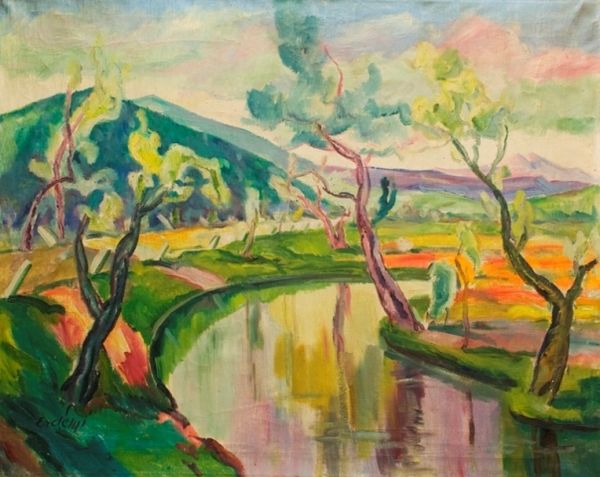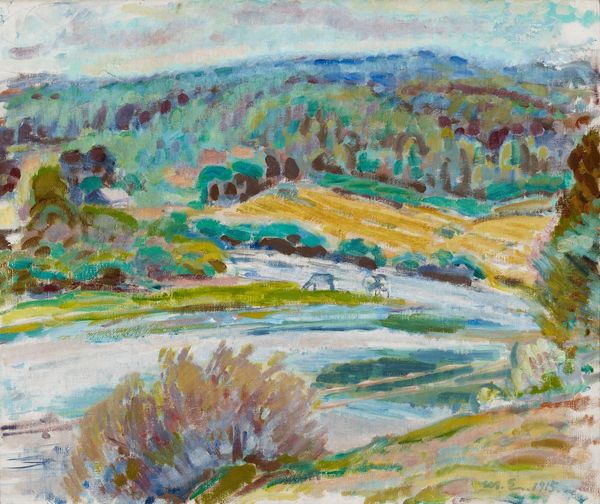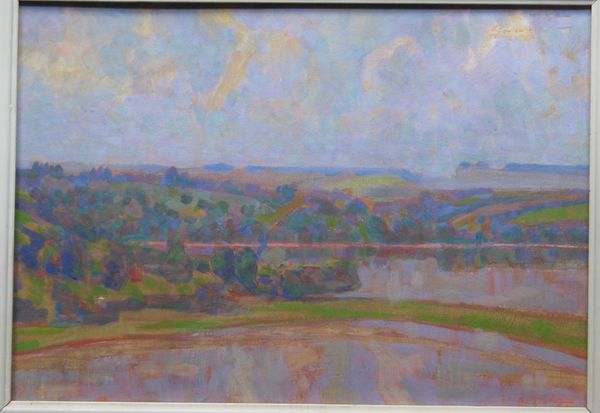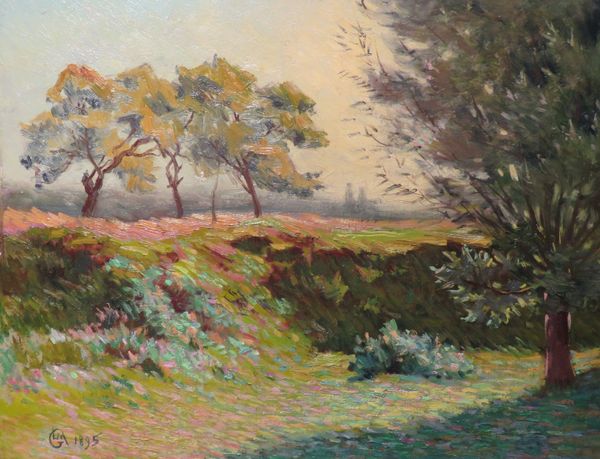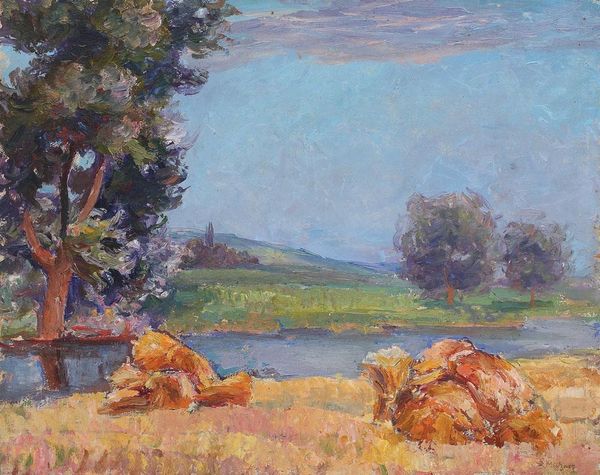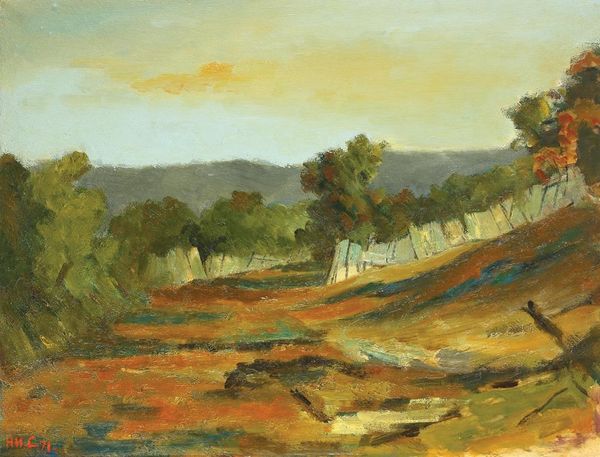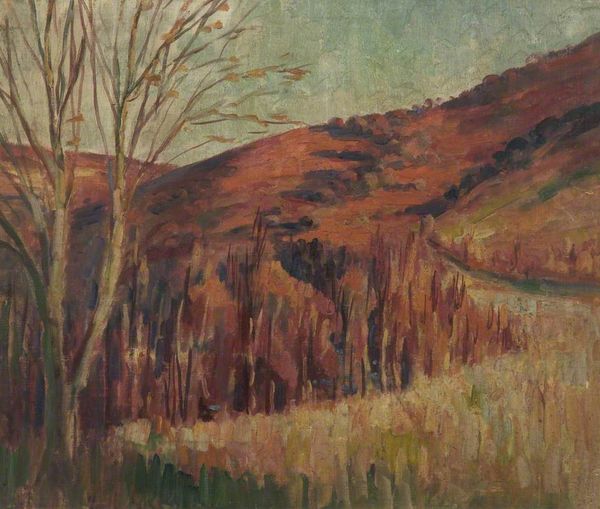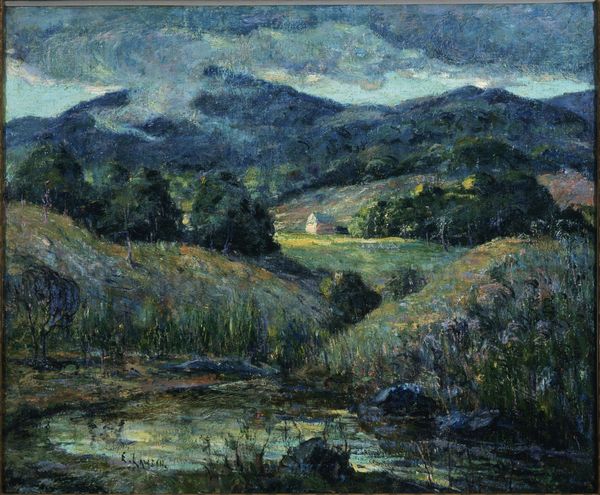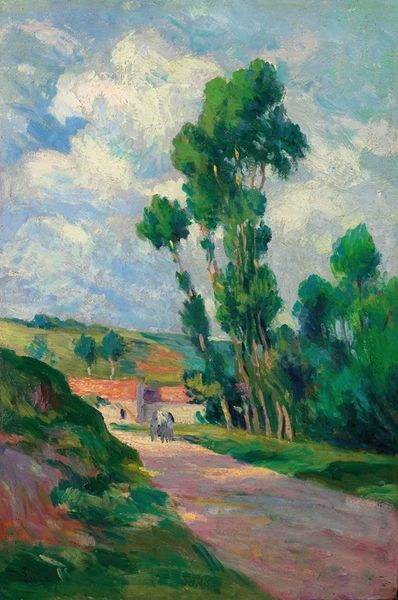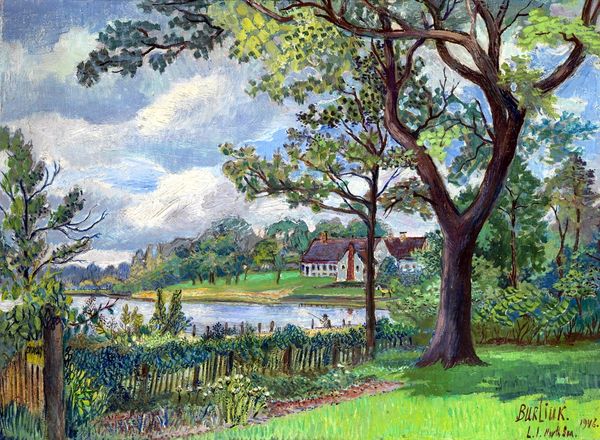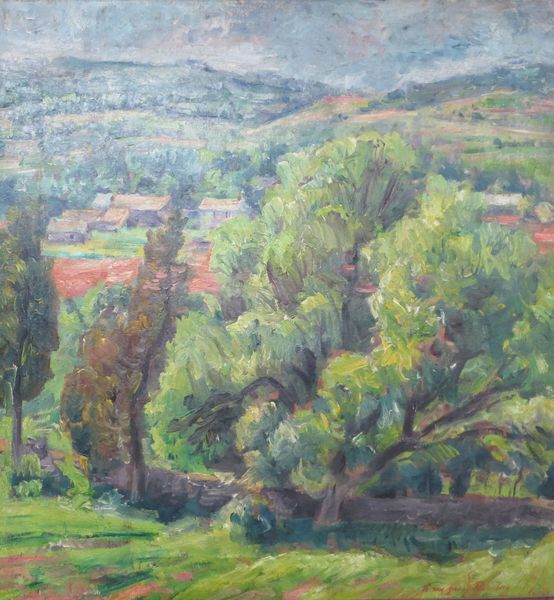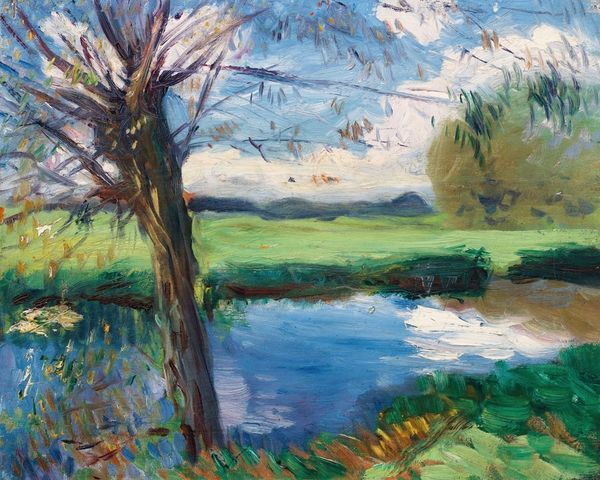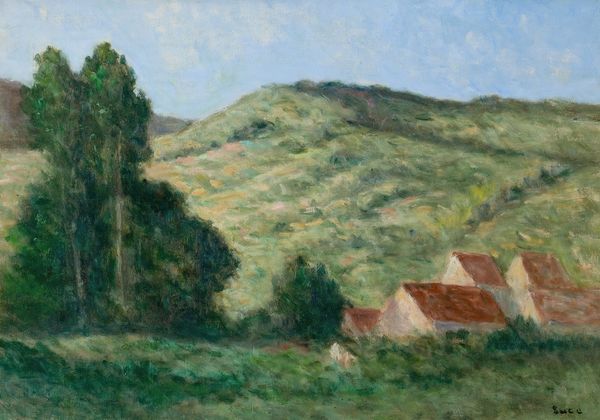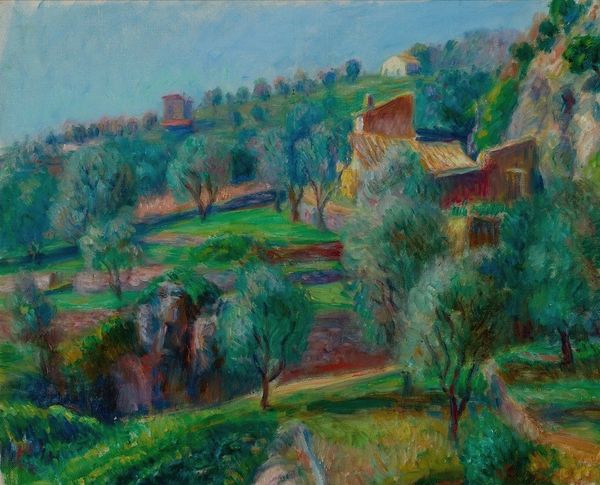
painting, plein-air, impasto
#
rural-area
#
painting
#
impressionism
#
plein-air
#
landscape
#
impressionist landscape
#
figuration
#
nature
#
impasto
#
genre-painting
Copyright: Nicolae Darascu,Fair Use
Editor: This painting, Landscape with Bridge at Vlaici by Nicolae Darascu, strikes me with its sense of peacefulness and rural simplicity. The impasto technique brings the landscape to life. How do you interpret this work? Curator: It is interesting to note Darascu’s focus on the Romanian landscape. I see more than just pastoral scenery here; I see a focus on the lives and labor of the Romanian peasantry at a particular historical moment. Consider the social and political context: Darascu was painting during a period of significant agrarian reform movements, and while the Impressionistic style may seem detached, could the decision to portray the countryside not be read as a conscious positioning of rural life as both valuable and worthy of artistic attention? How might the figures crossing the bridge symbolize the connections and transitions within this community? Editor: That’s a fascinating way to look at it. I hadn't considered the socio-political implications, focusing more on the artistic style itself. The figures almost seem incidental at first glance. Curator: Precisely, and perhaps that's the subtlety of Darascu's activism, it subtly challenges urban, industrial norms by portraying a romantic, almost idealized view of the rural sphere. Even the brushstrokes, mimicking natural, uneven surfaces, resist industrial standardization. Does seeing it through this lens change your initial impression? Editor: It does, profoundly! The painting becomes a quiet statement about the value of rural life and traditions during a time of massive social change. Curator: Exactly. And by displaying that specific image to the urban dwellers, Darascu is bridging two social classes and advocating equality of work! It shows how studying the social and historic landscape surrounding a work changes its face. Editor: Thank you! I will never be able to appreciate art without such an exercise ever again.
Comments
No comments
Be the first to comment and join the conversation on the ultimate creative platform.
